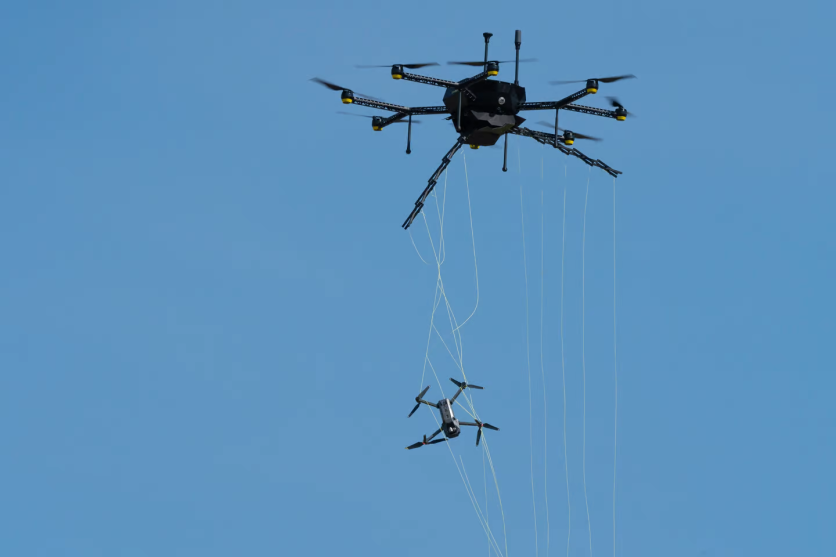Current drone-vs-drone systems today entail the defending drone firing a net at its enemy, this will trap the drone in the net, and it ceases to spin until it falls to the Earth.
However, there are chances that this ensnared drone could fall on someone's head or even damage buildings and properties, depending on its size. Hence, there is a need for drone systems to innovate and prevent unwanted accidents.
As reported first by New Atlas, the European AUDROs (AUtonomous DROne System) project is crafting cutting-edge drone systems to ensure that falling drones will not harm anyone.

The Autonomous Octocopter
In the system's present iteration - an Eagle One octocopter, produced by the Czech business Fly4Future, is operated out of a docking station for charging batteries, which was created by Polish firm Dronehub.
The Eagle One is autonomous, and when it finds an enemy drone, it automatically flies to its location, hovers above it, and then releases a series of dangling ropes that are extended from two fold-out booms on its underside.
New Atlas reports that the propellers of the enemy drone become ensnared in those cords, which is similar to how it would look if it was trapped in a net.
But the catch here is that the caught drone hangs beneath the Eagle One until it lands since the ropes are still connected. This will ensure that the drone will not fall and harm anyone.

Seizing Two Drones Per Flight
New Atlas further emphasized that in at least one current drone-netting system, the captured drone doesn't simply fall to the ground since the net is kept connected to the defending drone by a tether after being sent out.
However, Eagle One can seize two drones per flight because it has enough wires for two booms. In comparison, most net-shooting drones only have one net, so after taking out just one other drone, they must return to their base.
Recently, the system was successfully demonstrated in the Czech Republic in close collaboration with the Czech jail service. One potential use for the technology would be to prevent drones from being used to smuggle goods into or out of prisons.
Related Article : BAE Unveils An 'Unmanned Bullet Drone' That Can Fly at 0.75 Mach And Load 1,100 Pounds!
This article is owned by Tech Times
Written by Joaquin Victor Tacla
ⓒ 2026 TECHTIMES.com All rights reserved. Do not reproduce without permission.




